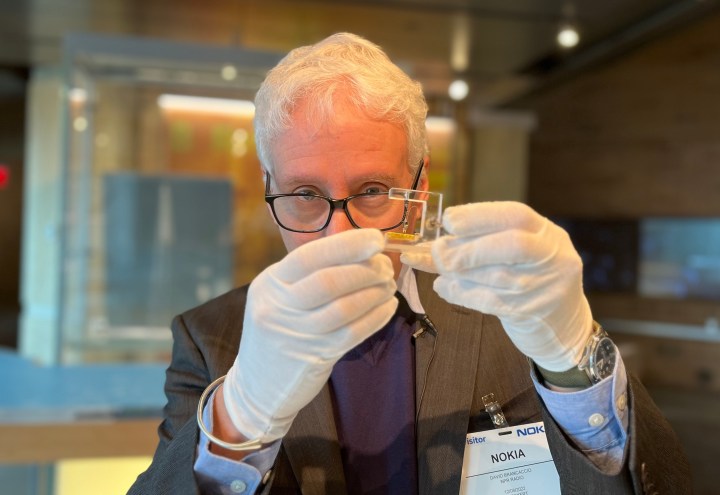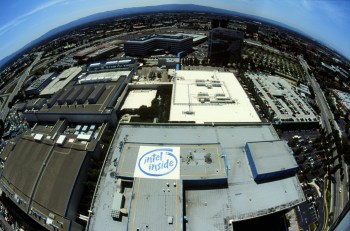
75 years ago, the transistor ignited the fire of modern innovation
75 years ago, the transistor ignited the fire of modern innovation

The future began 75 years ago this week with the invention of something small that’s considered the most manufactured item in human history. Odds are, you are surrounded by them right now.
The transistor was born in December of 1947, in New Jersey, and it has defined the last half of the 20th century and the first quarter of the 21st. We’re exploring the cultures of innovation that brought us the device that changed everything.
Take a look around the room. You’d be hard-pressed to find a gadget or gizmo within reach that does not contain a transistor. Just about everything electronic is full of them.
Our information and communications world owes a debt to a team of physicists who took theories that had been kicking around for decades, and — after years of false starts and dead ends — got the first transistor to work early in the postwar era.
Walter Brattain and John Bardeen of Bell Telephone Laboratories were responsible.
In this video, Brattain reads from Page 197 of his original lab notebook, talking about a demonstration they did for senior colleagues. “This circuit was actually spoken over. And by switching the device in and out, a distinct gain in speech level could be heard and seen on the scope presentation with no noticeable change in quality.”

This transistor was a contrivance that used a shard of rock: germanium, an element that’s not an electrical conductor like copper, nor is it an insulator like rubber. It’s something in between — a semiconductor.
Brattain and Bardeen’s supervisor, William Shockley, was so mad he hadn’t figured it out himself that in a convulsion of creativity just a month later, Shockley thought up an improved, easier-to-manufacture version of the transistor. All three would win the Nobel Prize for these innovations.
“It has enabled this global civilization,” said Michael Riordan, a physicist and science historian. He’s co-author with Lillian Hoddeson of “Crystal Fire: The Invention of the Transistor and the Birth of the Information Age,” widely regarded as the definitive history of the transistor.
“I would put it on the [same] level as fire, in terms of its importance to what modern life is like today,” Riordan said.
There’s almost a magic to the transistor. There are no moving parts. If you don’t have germanium, you can make it from sand. (We’ll get to the silicon revolution later in this series.) It continues to be manufactured smaller and smaller yet still works. It doesn’t use much power. Yet it’s responsible for so much.
“I don’t think you could have had the moon mission without these microchips,” Riordan said. “And I think it’s one of the main reasons the United States was first to get to the moon. The Soviet Union did not have a microchip industry in the 1960s.”

So, the transistor is up there with the harnessing of fire, but what exactly is a transistor? What does it do?
At first, two things. First, it acts as a tiny switch, like the flipper on a pinball game. When the ball comes rolling — that’s the electrical signal — the transistor can let it through or flip it away. Open or closed. A zero or a 1, the essence of what would become the digital revolution.
Secondly, a transistor acts as a kind of cattle prod, amplifying a signal so that it’s louder. If engineers could figure out how to make these en masse, they could replace the bulky, fragile glass tubes that heated up the insides of earlier electronics. That was the challenge.
What followed was … pretty much everything: a radio about the size of a deck of cards. Satellites. Computers everywhere. Movies on your mobile phone. E-commerce. The collapse of newspapers. Social media addiction.
We’re looking at the ecosystems that drive innovation forward. A place to start is the ecosystem that spawned the transistor: Bell Labs.
We wanted to know more about the place that employed the physicists who pulled it off. Yes, it was the phone company. And yes, back then, you simply called it the “phone company” because there was mainly just one: the mother of them all, AT&T.

As well as the transistor, Bell Telephone Laboratories had the resources and know-how to produce the solar cell, the laser, the communication satellite, the charged-coupled device camera chip used in digital imaging and the cellular phone system. And they were able to do this, in part, because of the phone bills your parents and grandparents were paying.
There’s a lot happening in the world. Through it all, Marketplace is here for you.
You rely on Marketplace to break down the world’s events and tell you how it affects you in a fact-based, approachable way. We rely on your financial support to keep making that possible.
Your donation today powers the independent journalism that you rely on. For just $5/month, you can help sustain Marketplace so we can keep reporting on the things that matter to you.


















